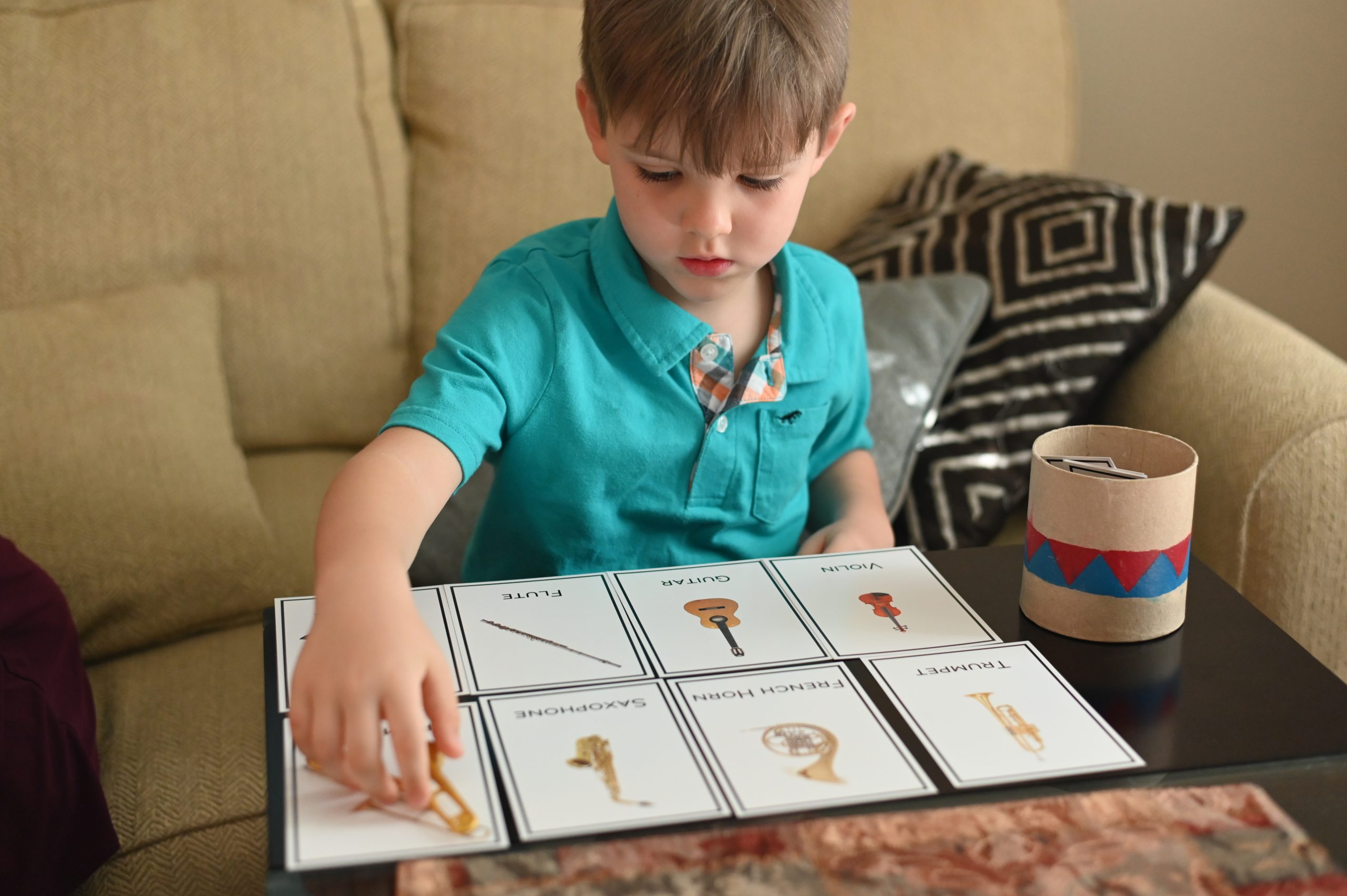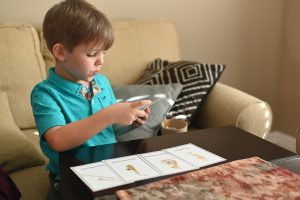Montessori 3-Part Cards
The language explosion that children experience in the first several years of life is astonishing. Children progress from forming simple sounds as babies to eventually speaking, reading, and writing their native language fluently. Learning the words to describe the world around them is a key part of this process. Montessori 3-part cards exist to help children in this aspect of their language development.
What Are Montessori 3-Part Cards?
Montessori 3-part cards, also known as nomenclature cards or classified cards, are a Montessori language material primarily for children from 3 to 6 years of age. 3-part cards expand a child’s understanding of the world while building their vocabulary and literacy skills.
As you can probably infer, the cards consist of three parts. The first part is a picture card that features an image. The second card is the label of the image. The third card, also called the control card, consists of the image and label together.
How to Present 3-Part Cards
Here are the basics for the initial presentation:
- First, the parent will lay out each picture and word card (control card) in a row or column, telling their child the name of each noun pictured.
- Once the control cards are placed, the parent will give the child each card with just the image. This step is simply matching the pictures and setting the card next to the matching control card.
- The final step is to match the word labels. If your child doesn’t know how to read yet, read the label out loud as you give it to them. The child then places the label under the appropriate picture card. For some, they can match the label based on descriptions of the object that you give them. For example, “This says ‘trumpet.’ Can you place this by the card that shows the trumpet?” For others, they can match based on the shape of the letters and the length of the word. The child will then check their work to ensure the images, labels, and control cards all match.
You can then mix up the 3-part card set and encourage your child to repeat the activity.
While we’ve outlined the basics for using a set of 3-part cards, there are many additional activities you can do with your child using individual elements of the set. For example, even very young children may enjoy matching two pictures or Montessori language miniatures to pictures.
At first, it may be easier to match language miniatures to an image of the language miniature itself. As your child grows, they will be able to match a language object to an image of the object it represents. For example, they can match a small cow language object to a picture of a real-life cow.
Benefits of Montessori 3-Part Cards
 Like many Montessori materials, 3-part cards are a versatile material that offer benefits at many different stages of a child’s development. Parents can use 3-part cards to prepare their child for reading, and then, once a child can read, they can use the cards to practice their reading skills.
Like many Montessori materials, 3-part cards are a versatile material that offer benefits at many different stages of a child’s development. Parents can use 3-part cards to prepare their child for reading, and then, once a child can read, they can use the cards to practice their reading skills.
Children as young as 1 can use 3-part cards in matching activities. When used for object-to-picture matching or picture-to-picture matching, 3-part cards introduce abstraction and visual discrimination. As The Kavanaugh Report explains, object-to-picture matching helps a child begin to understand abstraction, or that a picture can represent the object in their hands. Picture-to-picture matching, Nicole writes later in the series, helps children discriminate between two pictures using nothing but sight. Both of these skills prepare children for reading.
Once a child has mastered matching with pictures, you can introduce the labels. Even before a child reads, seeing the labels (and hearing them as you read them) can help them understand how written words represent tangible things in the world. For a reading child, 3-part cards provide reading practice.
Children of all ages and stages can use 3-part cards to classify related words and learn new vocabulary on a wide range of topics. However, the purpose of 3-part cards extends beyond just language development. Working with 3-part cards also helps children build connections, categorize objects, and better understand the world around them.
Creating Your Own Cards
Three-part cards are a relatively quick and easy DIY for parents and educators. First, choose which words you’d like to focus on. It’s best to start with familiar, everyday words and words that interest your child.
Creating 3-part card sets of related words can help your child learn classifications. For example, creating a 3-part card set of various fruits can help your child learn that, while strawberries, pears, and watermelons are different, they “go together” and pertain to a broader classification of fruits.
Next, find your images. Focus on simple, realistic images with a plain background. Freepik is a great resource for royalty-free images.
Once you have your vocabulary and images selected and saved, it’s time to create your 3-part cards in a word processing or photo editing program. Insert your image and write its label underneath in a clear, legible font. Then, print it twice. Keep one copy whole as the control card. On the second copy, cut between the image and the label. This will give you both the picture card and label card. Printing on card stock and laminating your cards can help them last longer.
Canva is a free photo editing website that offers you a simple way for you to create these cards even if you’re not familiar with photo editing.
Montessori By Mom also offers free 3-part card printables to make your life as a parent as simple as possible. Stay tuned for free weekly 3-part cards published on our blog!




0 Comments